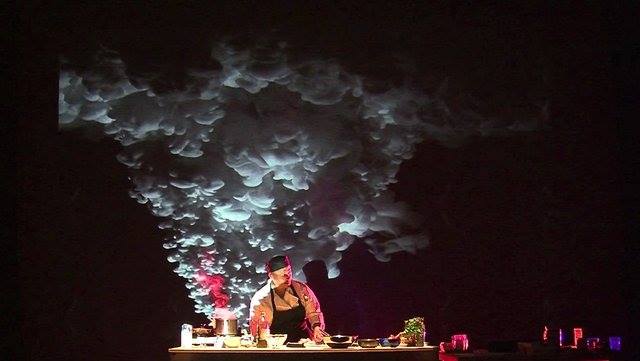

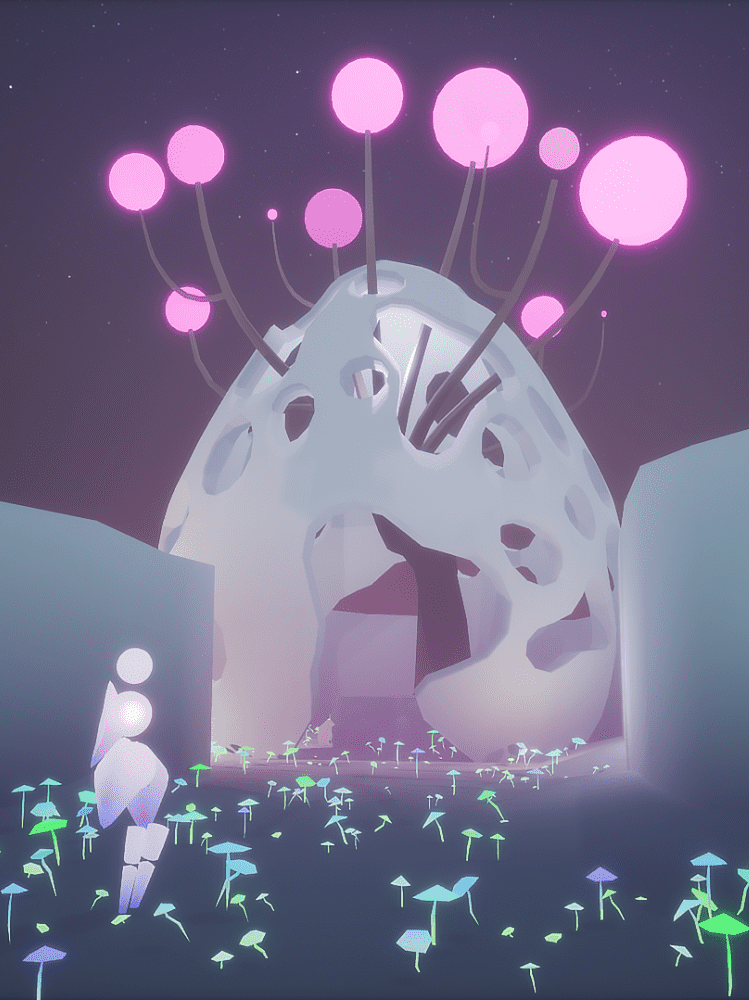
Trust
Hivemind
Hivemind is a knowledge game for artists to navigate the inner workings of their practice. The game is part of the Serpentine R&D Platform’s continued effort to reimagine how artists and institutions can bring audiences into the research phases of their work. Created by Trust members Calum Bowden, Will Freudenheim and Joanna Pope, the game allows for narrativised walkthroughs by artists of their back-end working environments. The artists approached the creation of Hivemind with this question in mind: how can you build a game that allows artists to archive and share, not only a finished artwork, but the tools, data and experiments they’ve built to bring their work into existence?
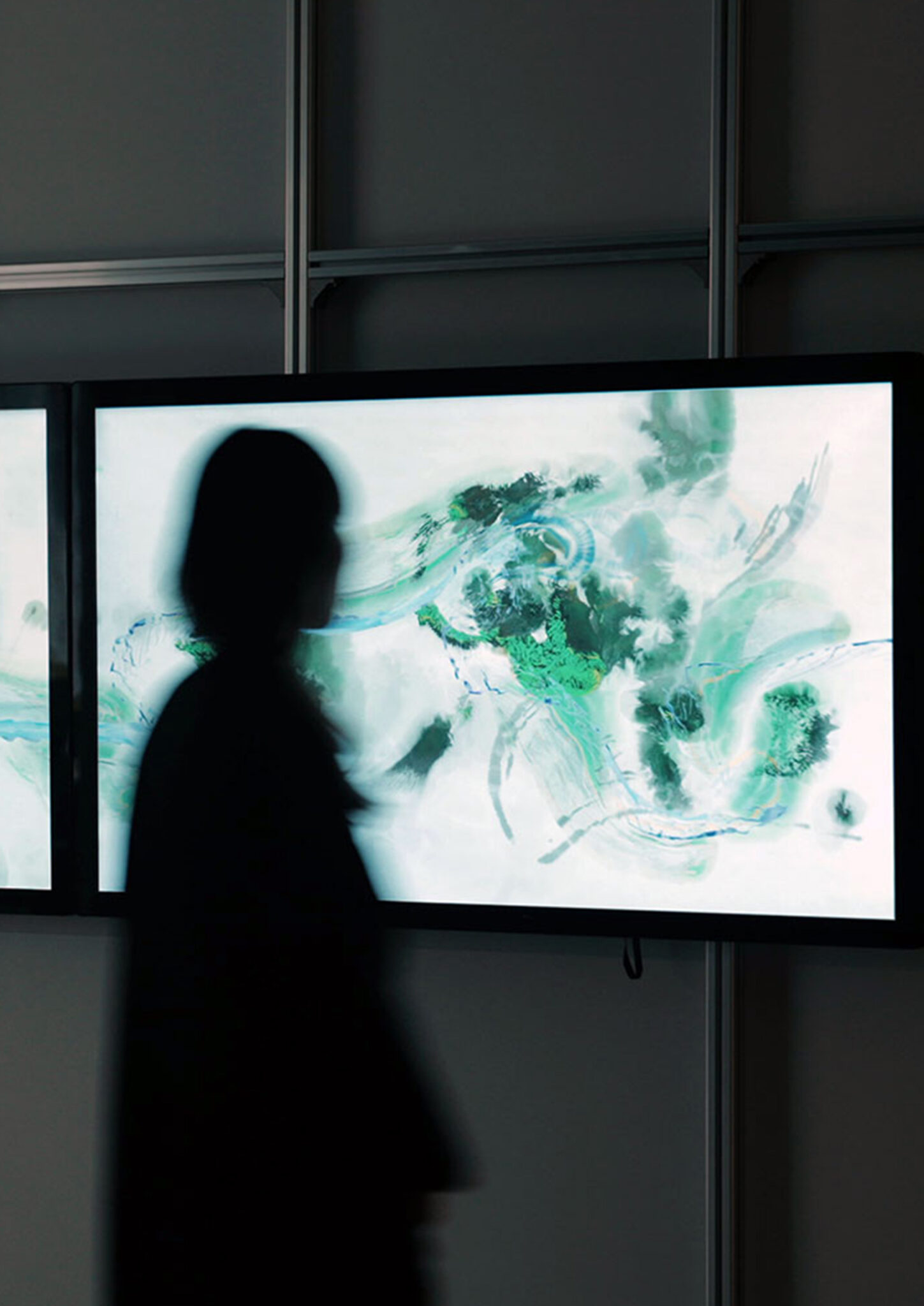
QUBIT AI: Seph Li
Everything Before, Everything After
FILE 2024 | Installations
International Electronic Language Festival
Seph Li – Everything Before, Everything After – China and UK
A digital installation features a winding river in the style of Chinese painting, symbolizing time and transition. Touch screens allow visitors to paint over it, altering its course unpredictably. The river embodies history and the future, with each trace contributing to its eternal flow through space and time. Recorded interactions ensure its perpetual existence.
Bio
Born in Beijing in 1988, Seph Li has a mixed background in technology and design, and his keen interest in interactive artworks led him to the field of media arts. Seph studied computer science and entertainment design at Tsinghua University and continued his master’s study in design/media arts at UCLA. Seph currently resides in London, United Kingdom; he creates interactive artworks as well as technical experiments with other production studios.

clara daguin
In July, we (Jacquard) launched “Ambient Experiments by Google ATAP”. Our team has worked with the designer Clara Daguin who explores the possibilities of connected fashion.
.
Im Juli haben wir (Jacquard)„Ambient Experiments by Google ATAP“ gestartet. Unser Team hat mit der Designerin Clara Daguin zusammengearbeitet, die die Möglichkeiten vernetzter Mode erforscht.
.
7月には (Jacquard)「GoogleATAPによるアンビエント実験」を開始しました。 私たちのチームは、コネクテッドファッションの可能性を探求するデザイナーのクララダギンと協力してきました。ンビエント実験
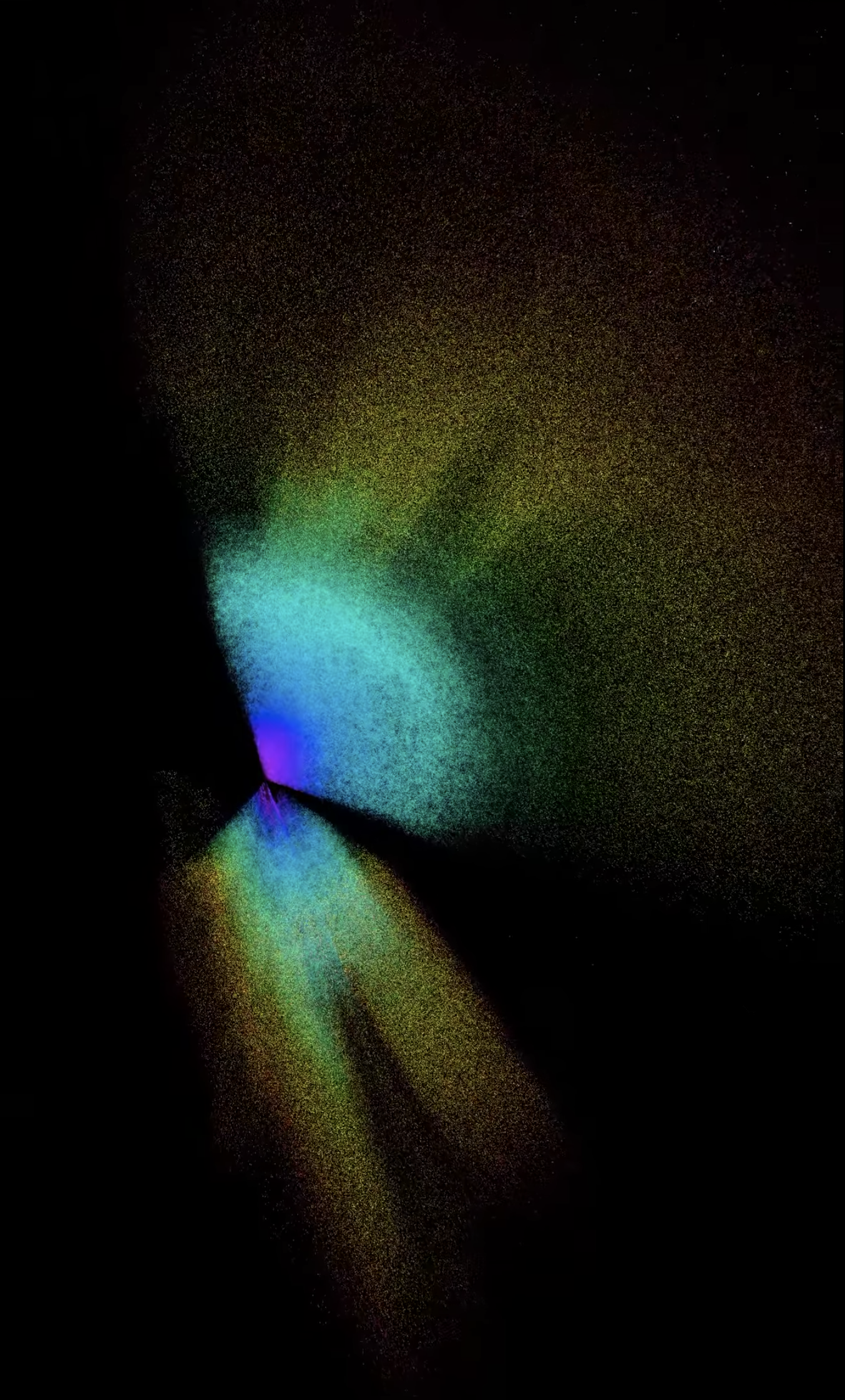
The eBOSS 3D map of the Universe
extended Baryon Oscillation Spectroscopic Survey ( eBOSS)
“Taken together, detailed analyses of the eBOSS map and the earlier SDSS experiments have now provided the most accurate expansion history measurements over the widest-ever range of cosmic time. These studies allow us to connect all these measurements into a complete story of the expansion of the Universe.” Will Percival

TOSHIO IWAI
Piano
Iwai’s Piano — As Image Media (1995), a later sound work, is related to these early interactive experiments. Here the user, seated at the piano, triggers a flow of images that depress the piano’s keys; a consequence of this action releases yet another flight of images. The resulting interactive installation synthesizes two different aesthetics: sounds (simple melodies), images and a mechanical object (the piano) with digital media. A projected score and computer-generated imagery transform the piano into image media, hence the work’s name. Sound is the triumphant component in these works, for it activates and shapes the visual work. But the visual aspect of Iwai’s installations is lovely. His interactive systems appeal to the creative impulses of adults and children alike with their celebration of animation, computer potential, and the joy of sound.07

ALWIN NIKOLAIS
Noumenon
A truly universal artist, the American Alwin Nikolais (1910-1993) devoted his life to a radical form of staged art he called “dance theater.” Inspired (perhaps unconsciously) by the experiments of Bauhaus members such as Oskar Schlemmer and László Moholy-Nagy in the 1920s, Nikolais devised a style of abstract dance that encompassed costumes, stage sets, choreography, lighting, and music, all under his control. Also in 1963, Nikolais met analog synthesizer pioneer Robert Moog, who was at the time just starting his business in New York. He was fascinated by the sounds of Moog’s machines, and with the money provided by a a Guggenheim Fellowship, Nikolais bought the first ever commercially produced Moog synthesizer. It was the primary sound-source for all of Nikolais’ scores from 1963 to 1975. The instrument is now housed at the Stearns Collection of Musical Instruments at the University of Michigan in Ann Arbor.

Arcangelo Sassolino
The way we were
Not only does Arcangelo Sassolino transform failure into art, but he manages to make the art of failing a profound part of the art of living. He goes even further in the awareness of risk. He is aware that his experiments may not hold up to the forces that he himself puts in place but this possible collateral damage wants to represent an additional value, becoming precisely the existential metaphor of the concepts of risk and failure. His installations explore the behavior and mechanical limits of matter, he forces their characteristics to distort their shape, gravity, pressure, friction, statics, and of each possibility Sassolino contemplates the risks of collapse with its precise timing and programming.
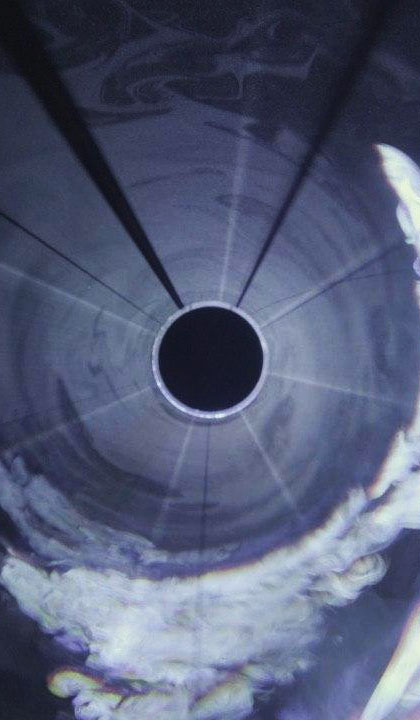
SETUP
Tube
S E T U P is a stage design and lighting design international studio founded by Znamensky Dmitry, Novikov Stepan and Zmunchila Pavel. The studio works in the field between contemporary art, lighting design and programming with a mission to explore the expressive opportunities provided by new digital technologies. S E T U P aims to create installations and multimedia works that can sharpen the physical perception of the environment and help explore more possibilities of image manipulation. Our creative product is high-tech multimedia work, concepts and laser installations. Our studio is open for experiments and is ready to cooperate with various artists to find the right visual interpretations for their work.
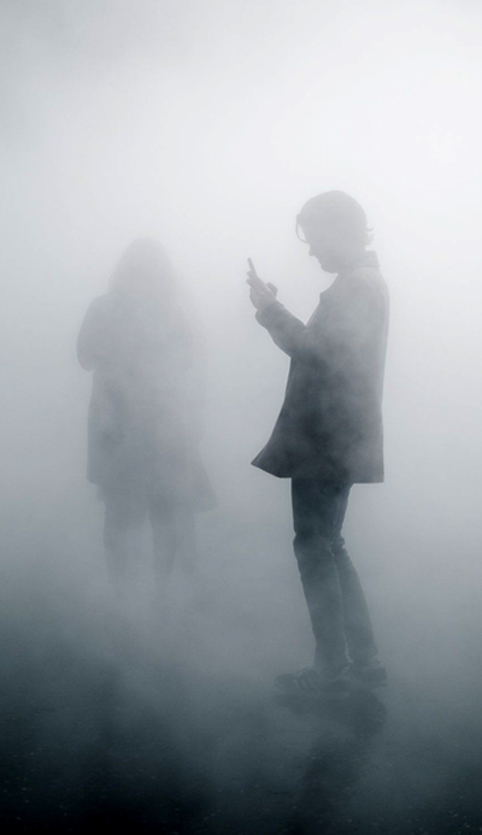
FUJIKO NAKAYA
中谷芙二子
fog sculptures
ok-offenens kulturhaus linz
In 1970 Nakaya created her first fog sculpture when commissioned by the group Experiments in Art and Technology (E.A.T) to make a work for the Pepsi Pavillion of the Osaka World Exposition. In creating a work of white mist enclosing the building, Nakaya became the first artist to have used fog as a sculptural medium. E.A.T is an organisation devoted to facilitating working relationships between artists and engineers. Nakaya worked with American engineer Thomas Mee to create the fog for her Osaka commission, the technique for which she has continued to use, with minor moderations, for her subsequent fog sculptures since.Whilst Nakaya has also worked in film and video, it is her use of fog for which she is best known. Nakaya has used pure-water fog to create installations, performances, stage-sets and environmental park designs, often collaborating with other artists or with performers, choreographers and composers. Nakaya’s interest in fog has developed from its relation to our visual sense. In a thick fog we become disorientated, frustrated at our inability to see. In this way, Nakaya’s sculptures activate our other senses, to compensate for our loss of sight.

Liam Young
In the robot skies
In the Robot Skies is the world’s first narrative shot entirely through autonomous drones. In collaboration with the Embedded and Artificially intelligent Vision Lab in Belgium the film has evolved in the context of their experiments with specially developed camera drones each programmed with their own cinematic rules and behaviours. The film explores the drone as a cultural object, not just as a new instrument of visual story telling but also as the catalyst for a new collection of urban sub cultures. In the way the New York subway car of the 80’s gave birth to a youth culture of wild style graffiti and hip hop the age of ubiquitous drones as smart city infrastructure will create a new network of surveillance activists and drone hackers. From the eyes of the drones we see two teenagers each held by police order within the digital confines of their own council estate tower block in London. A network of drones survey the council estates, as a roving flock off cctv cameras and our two characters are kept apart by this autonomous aerial infrastructure.
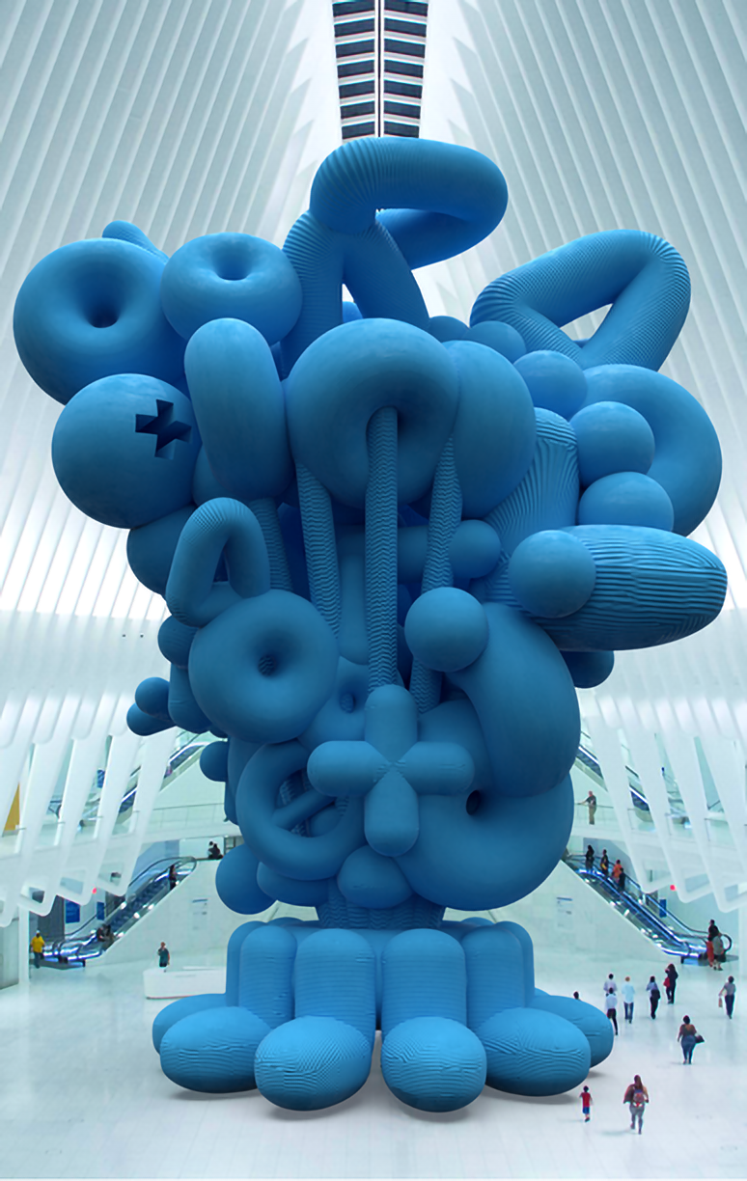
Ken Kelleher
Bigfoot
While variety in composition and form is evident, Kelleher further experiments with material and color. Digital rendering techniques offer endless iterative opportunities. Multiple shifts in material, especially when applied to a singular form, allow for a variety of interpretations. Kelleher explains: ‘The visual expression I try to achieve is one that is open to interpretation. In one piece someone may see something playful, or whimsical, in another it may feel menacing.’

SQUAREPUSHER
Ufabulum
Soundcrash are proud to present the electronic music innovator that is Squarepusher! Beginning his sonic experiments in 1994, Squarepusher constantly strives to push the boundaries and limits of electronic music. In May 2012 Squarepusher unleashed his latest musical venture ‘Ufabulum’, an album of music generated purely from digital programming, ensuring his influence within today’s global music electronic scene is as vital as ever. For his first headline ‘Ufabulum’ album show in London, Squarepusher will take over the historic music hall Hackney Empire with his largest ever light-show to date! This is a unique opportunity to witness one of electronic music’s pioneers in an extraordinary setting.

Masaki Fujihata
Orchisoid
“Mobility, technological invention, and artistic invention “It’s not just about putting new media into art, or even making new media art. It is about making new media as an artist, about being an artist in new media. Therefore, if it is not only a question of renewing art by injecting it with new means, new tools, new subjects, it may be a matter of shifting its borders to the point of considering experiments, technological inventions, such as art-related events, as part of the artistic project ”. In my opinion, here is how to re-found art and breathe new life into it for years to come! Fujihata’s work leads us to think of Art as “technical conduct”. In this conduct, technique is not instrumentalised, it is therefore freed from having to serve FOR something, it does not have to be effaced in front of what it serves. But this notion is very “fragile” as Pierre-Damien Huyghe points out to us. Indeed, if the technique “is no longer used for” it is no longer “necessary”. We must therefore consider that what is not necessary is precisely what is useful. Highlighting the usefulness in a technique without going through a notion of service is precisely what is at stake in Masaki Fujiata’s artistic position. In his work, it is about exploring the possibilities of a group of techniques so that they do not end up in the use where they are usually agreed. At the heart of Fujihata’s work we are dealing with techniques rich in possibilities. The artist has an artistic conduct which does not seek the means to do something with these techniques but which seeks to discover them. The artist positions himself as a discoverer making both learned and humorous attempts … “Jorane Rest

kenneth snelson
Needle Tower
“Inspired by architect Buckminster Fuller’s interest in the geometry of structure, Snelson’s experiments led to a prototype for a “floating compression structure.” Fuller subsequently credited Snelson with having invented a new structural principle which the architect named tensegrity, a contraction of the words tension and integrity.
These investigations into the physical properties of structure became more fully realized as an art form beginning in the 1950s. Snelson created sculptures consisting of tubes and cables. Cylinders of steel seemingly dance through space in defiance of gravity, yet it is the structural competition between tension and compression which underlies their construction. Snelson finds beauty in bringing these forces of nature into balance: the rigid compression tubes pushing outward, the flexible tension cables pulling inward. His sculptures would maintain their structural integrity beyond gravity, in the vacuum of outer space.” Joelle Burrows

FABRICA
Anerkennung
Recognition, Gewinner des IK-Preises 2016 für digitale Innovation, ist ein Programm für künstliche Intelligenz, das aktuellen Fotojournalismus mit britischer Kunst aus der Tate-Sammlung vergleicht. In drei Monaten vom 2. September bis 27. November wird Recognition eine ständig wachsende virtuelle Galerie schaffen: eine Zeitkapsel der Welt, die in verschiedenen Arten von Bildern aus Vergangenheit und Gegenwart dargestellt wird. Eine Ausstellung in der Tate Britain begleitet das Online-Projekt und bietet Besuchern die Möglichkeit um den Auswahlprozess der Maschine zu unterbrechen. Die Ergebnisse dieses Experiments – um zu sehen, ob eine künstliche Intelligenz aus den vielen persönlichen Reaktionen lernen kann, die Menschen beim Betrachten von Bildern haben – werden am Ende des Projekts auf dieser Website vorgestellt. Recognition ist ein Projekt von Fabrica für Tate; in Partnerschaft mit Microsoft, Inhaltsanbieter Reuters, Algorithmus für künstliche Intelligenz von Jolibrain.

Nick Ervinck
Plant Mutation
The idea of mutation and manipulation has always appealed to Nick Ervinck’s imagination. In the ‘plant mutation’ series, he uses 3D experiments to explore ideas of both organic and genetically engineered life forms. Nick Ervinck created an openness that will attract the viewer to consider his work from different angles. These works have both a poetic and a critical social dimension. On the one hand, the sculptural contradictions, such as inside/outside and rough/smooth, make these works purely poetic. The visual language of these organic sculptures has a surprising impact.

Refik Anadol
Quantum memories
Quantum Memories is Refik Anadol Studio’s epic scale investigation of the intersection between Google AI Quantum Supremacy experiments, machine learning, and aesthetics of probability. Technological and digital advancements of the past century could as well be defined by the humanity’s eagerness to make machines go to places that humans could not go, including the spaces inside our minds and the non-spaces of our un- or sub-conscious acts. Quantum Memories utilizes the most cutting-edge, Google AI’s publicly available quantum computation research data and algorithms to explore the possibility of a parallel world by processing approximately 200 million nature and landscape images through artificial intelligence. These algorithms allow us to speculate alternative modalities inside the most sophisticated computer available, and create new quantum noise-generated datasets as building blocks of these modalities. The 3D visual piece is accompanied by an audio experience that is also based on quantum noise–generated data, offering an immersive experience that further challenges the notion of mutual exclusivity. The project is both inspired by and a speculation of the Many-Worlds Interpretation in quantum physics – a theory that holds that there are many parallel worlds that exist at the same space and time as our own.

Nohlab
Motion Experiment
As one of the first integrated motion design experiments with a KUKA robotic arm, the project was a kinetic audiovisual experience, speculating the volatility of ideas at the intersection of creativity and technology.

Oleg Soroko
Procedural cloth V//002
“I’m continuing experiments with procedurally generated structures. This time I’m implementing algorithm assembled in Houdini over female body. All meshes generated in Houdini. Then uploaded to sketchfab. All images made from sketchfab model. You can check it in 3d in any browser by the link in my profile.” Oleg Soroko

Ka Fai Choy
Synchrometrics
Can we design future memories for the body?
Is the body itself the apparatus for remembering cultural processes?Prospectus For a Future Body proposes new perspectives on how the body remembers and invents technological narratives. Central to the project is the study of body movement in dance: How it can evolve, adapt or re-condition to possible futures?Eternal Summer Storm explores the concept of muscle memory transfer as an alternative form of interactive cultural continuities. This concept prototype speculates on a future digital library of body movements or dance techniques that can be experienced beyond the audio-visual conventions. Eternal Summer Storm attempts to recreate legendary Japanese dancer Tatsumi Hijikata’s Butoh dance choreography and experience in ‘A Summer Storm’ (1973) from archival footages.Bionic Movement Research is a collection of experiments on the process of designing digital muscle memory for the body. Inspired by Luigi Galvani discovery (1780) of animal electricity in the human body, these experiments appropriate the techniques of electrical nerve stimulation to choreograph artificial muscle contraction and body movement.

Karen Lancel and Hermen Maat
Kissing Data Symphony
Intimacy Data Symphony is a poetic ritual for intimate experience of Kissing and Caressing each other faces, multi-sensory and socially shared in public space of merging realities. In live experiments with Multi-Brain BCI E.E.G. head-sets, visitors are invited as Kissers (or Caressers) and Spectators. Brain activity of people kissing and caressing is measured and visualized in streaming E.E.G. data, real-time circling around them in a floor projection. Simultaneously, the Spectators brain waves are measured, their neurons mirroring activity of intimate kissing and caressing movements, resonating in their imagination. The Spectators brain activity data are interwoven in the data-visualization. Brain activity of all participants, mirroring each others emotional expressions and movements, in interpersonal and aesthetic ways, co-create an immersive visual, Reflexive Datascape.

Studio Tish
Vanishing Places
Vanishing Places is an audio-visual installation that investigates dialogues and tensions between the real and artificial. In keeping with the studios recent experiments with real-time generative visuals, Vanishing Places brings a new iteration of the intersection of digital life-simulating systems and organic interaction.

Moritz Simon Geist
Soft Manipulator
A playful interactive installation where the audience experiments with rhythms, mechanics and objects. Everyday items like glasses, pots, as well as small music instruments are placed on a light plattform. Seven robotic mechanic devices can be manipulated interactively by the audience, manipulating the sound of the objects. The six robotic mechanics beat the objects, creating a constantly changing polyrhytmic web of sound and rhythm.

TOMÁS SARACENO
توماس ساراسينو
托马斯·萨拉切诺
トマスサラセーノ
SOLAR BELL
Inspired by Alexander Graham Bell’s lesser-known experiments with flight behavior of tetrahedrons, Berlin-based artist Tomas Saraceno developed Solar Bell – a lightweight, wind and solar powered, sculpture that plays with the concept of flying buildings.
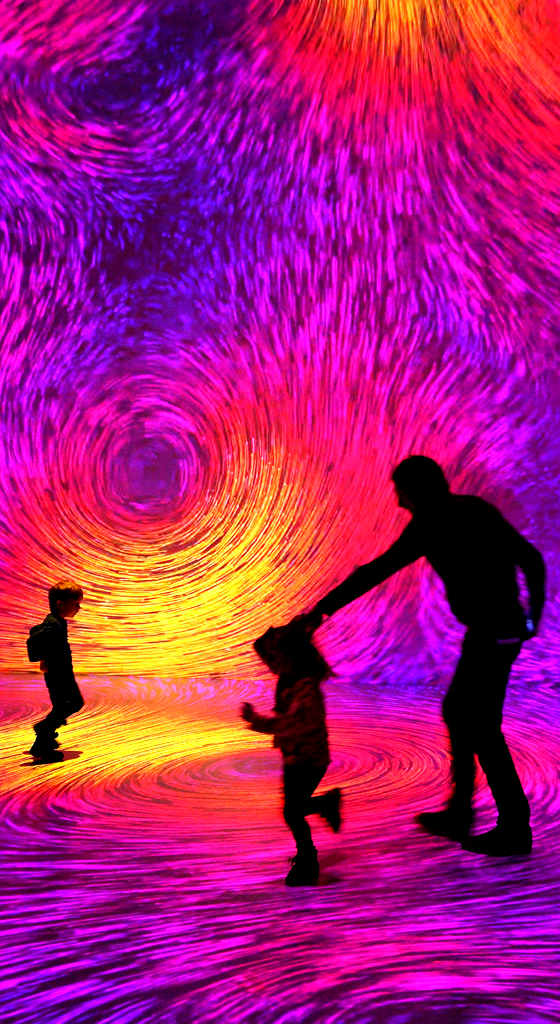
studio Melt
Turbulence
TURBULENCE is an ongoing series of immersive experiences created for large-scale, high-resolution media environments that embosom the viewer in digital flow of particles.It’s a set of visual experiments on particles simulated in different virtual environments.
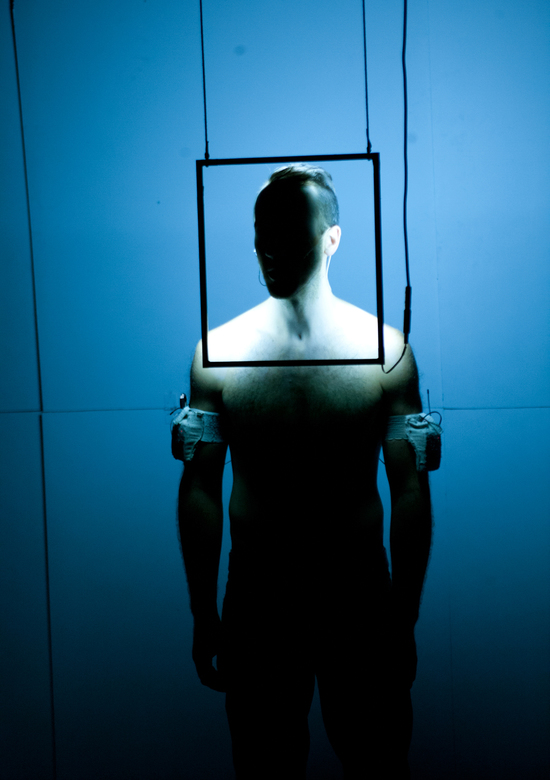
Andrew Schneider
YOUARENOWHERE
Conjuring a futuristic sort of shamanism, Andrew Schneider’s YOUARENOWHERE experiments with the virtues of sensory overload via quantum mechanics, parallel universes, and the “Missed Connections” board on Craigslist. Battling glitchy transmissions, crackling microphones, and lighting instruments falling from the sky, one guy on a mission and a tricked-out interactive new-media landscape merge to transform physical space, warp linear time, and short-circuit preconceived notions of what it means to be here now.
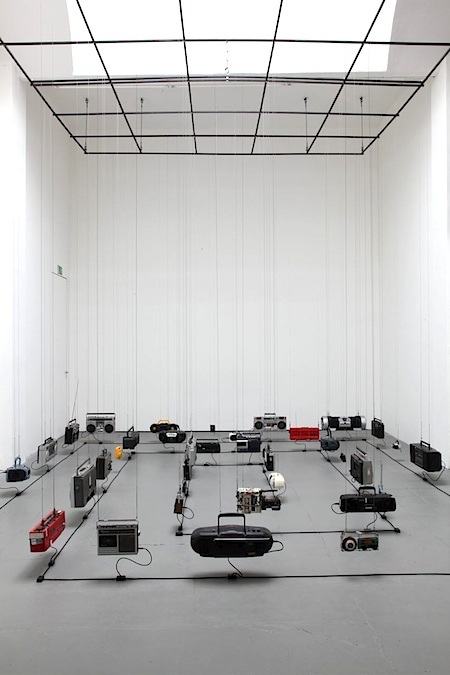
MAIA URSTAD
Maia Urstad, a sound artist based in Bergen, Norway, joined ISIS in 2009 for a 3-week research residency. Maia’s research was based around using and adapting portable radio systems and local FM-transmissions. Maia explored the Northumberland coast where she carried out experiments with multiple radios, broadcastings signals across the North Sea from the cliffs of Howic and the beaches surrounding Bamburgh in an attempt to communicate across the sea, attempting to reach her home town of Bergen.

Refik Anadol
Machine Hallucination
Refik Anadol’s most recent synesthetic reality experiments deeply engage with these centuries-old questions and attempt at revealing new connections between visual narrative, archival instinct and collective consciousness. The project focuses on latent cinematic experiences derived from representations of urban memories as they are re-imagined by machine intelligence. For Artechouse’s New York location, Anadol presents a data universe of New York City in 1025 latent dimensions that he creates by deploying machine learning algorithms on over 100 million photographic memories of New York City found publicly in social networks. Machine Hallucination thus generates a novel form of synesthetic storytelling through its multilayered manipulation of a vast visual archive beyond the conventional limits of the camera and the existing cinematographic techniques. The resulting artwork is a 30-minute experimental cinema, presented in 16K resolution, that visualizes the story of New York through the city’s collective memories that constitute its deeply-hidden consciousness.
HALO
SEMICONDUCTOR
HALO is a large scale immersive artwork which embodies Semiconductor’s ongoing fascination with how we experience the materiality of nature through the lens of science and technology. Taking the form of a large cylinder, the structure houses a 360-degree projection of scientific data while an array of 384 vertical wires are played by the same data, to produce the sound. The work draws the viewer into its centre in order to inhabit the results of particle-collisions, produced by experiments taking place at CERN, in Geneva, Switzerland.

THEODORE SPYROPOULOS
BEHAVIOURAL COMPLEXITY
Design Research Laboratory (AADRL) and the experimental design studio Minimaforms examining a behavior-based agenda that engages experimental forms of material and social interaction. Cybernetic and systemic thinking through seminal forms of prototyping and experimentation will situate the work through continued experiments that have manifested since the early 1950s as maverick machines, architectures and computational practices exploring the generative potential of self-regulating phenomena as proto-architectural environments. Through explicit models of interactions, observable patterns and proto-animalistic agency; the research will discuss the capacity of these systems to evolve, adapt and self-structure through computation.


Julien Prévieux
Patterns of life
Patterns of life” is a short movie by French artist Julien Prévieux dealing with the history of the technological capture of human movements. Starting with the use of chronophotography to model abnormal gait in the late 19th century, the film offers a choreographic reenactment of a long series of experiments that have been designed to extract objectified patterns of activities from the motions of living bodies, whether with the view to discipline, to control, or to target them.
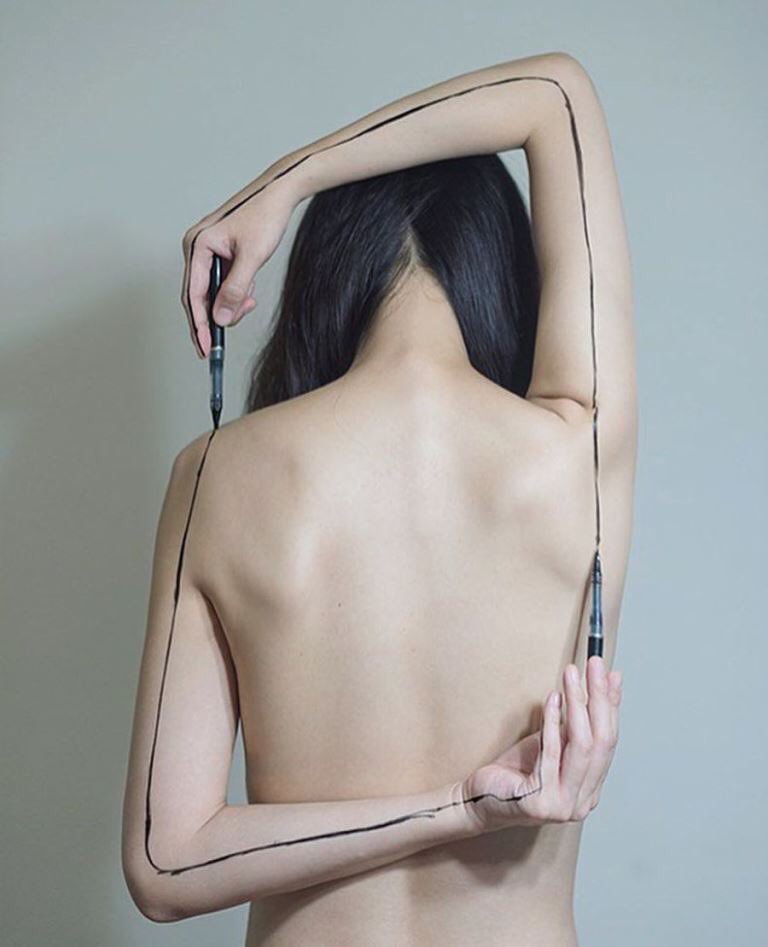
YUNG CHENG LIN
ЮНГ ЧЕНГ ЛИН
يونغ تشنغ لين
The photographic experiments of the Taiwanese artist Yung Cheng Lin, aka 3cm, who confronts the human anatomy to external elements such as red thread or simple fruits, imagining surreal and geometric compositions. Some intense and disturbing conceptual photographs, which question our relation to the body and organic matter.
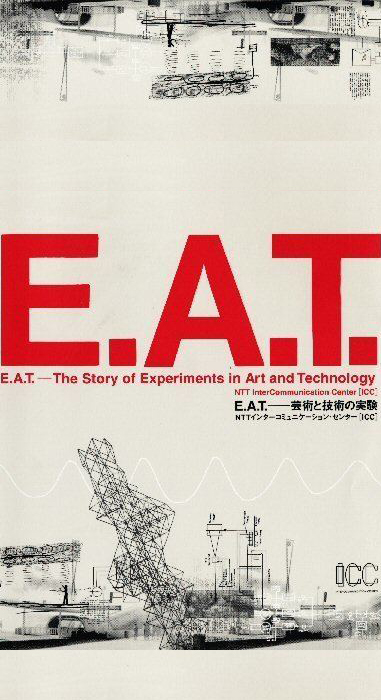
E.A.T
E.A.T
Experiments in Art & Technology
In 1966, 10 New York artists worked with 30 engineers and scientists from the world renowned Bell Telephone Laboratories to create groundbreaking performances, known as 9 Evenings: Theatre and Engineering. Artists included Andy Warhol, John Cage, Lucinda Childs, Vyvind Fahlstrvm, Alex Hay, Deborah Hay, Steve Paxton, Yvonne Rainer, Robert Rauschenberg, David Tudor, and Robert Whitman. Notable engineers involved include: Bela Julesz, Billy Kluver, Max Mathews, John Pierce, Manfred Schroeder, and Fred Waldhauer.

LIN YUN CHENG
ЮНГ ЧЕНГ ЛИН
يونغ تشنغ لين
The photographic experiments of the Taiwanese artist Yung Cheng Lin, aka 3cm, who confronts the human anatomy to external elements such as red thread or simple fruits, imagining surreal and geometric compositions. Some intense and disturbing conceptual photographs, which question our relation to the body and organic matter.
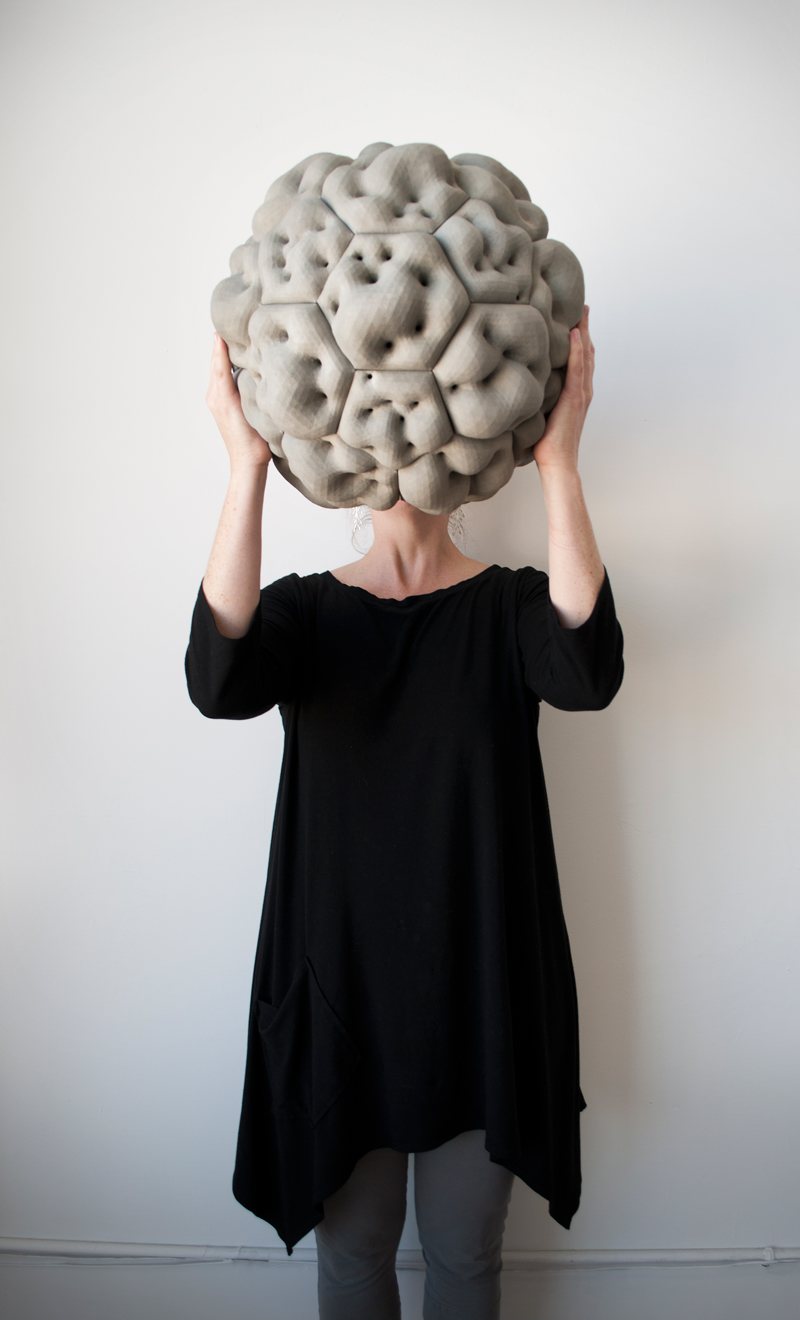
Andrew Kudless
p_ball
This project investigates the self-organization of two materials, plaster and elastic fabric, to produce evocative visual and acoustic effects. Inspired by the work of the Spanish architect Miguel Fisac and his experiments with flexible concrete formwork in the 1960-70s, p_wall attempts to continue this line of research and add to it the ability to generate larger and more differentiated patterns. Starting from an image, a cloud of points is generated based on the image’s grayscale values.

Matt Johnson
Levitating Woman
The way American artist Matt Johnson (born 1978) experiments with shapes and materials is apt to take the spectator by surprise. His creations are endowed with whimsical as well as subtle aspects. Drawn towards the mysterious and spiritual, Johnson remains deeply rooted in art history as he comments on life’s complexities. He often chooses materials that seem to conflict with his subjects.

MICHAEL CLARK COMPANY
マイケル·クラーク·カンパニー
Tate Project Part I ]
The choreography rehearsed and performed in 2010 paired the rigour of classical steps with contemporary movement, a juxtaposition that paralleled Clark’s training as a ballet dancer at the Royal Ballet, and his later anti-hierarchical, anti-authoritarian choreographic experiments. Balletic poses, jumps and steps were isolated from traditional narrative sequences and made strange through repetition. The graceful leaps and turns of the trained dancers seemed awkward and uneven, just as they were often out of sync and oriented in different directions. This choreography paralleled the performance space, which was demarcated by geometric and striped floor mats designed by Charles Atlas, which resembled the large windows at the back of the hall and the black beams that extend vertically from floor to ceiling.

Philippe Grammaticopoulos
Les Ventres
This story of “Les Ventres” (“The Bellies”) is a thought about our epoch, an ironic and critical vision of the food-processing industry. The agribusiness uses the scientific progress to make a profit, to the detriment of the public health. The story finds a place in a world polluted and denatured by experiments, where all men eat only giant snails. In this context, a man explores a giant empty shell which becomes the gate of hell.

Philippe Grammaticopoulos
The Bellies
In a very industrialized world, where humans only eat transgenic food, some plates make for surprising dishes… This story is a thought about our epoch, an ironic and critical vision of the food-processing industry. The agribusiness uses the scientific progress to make a profit, to the detriment of the public health. The story finds a place in a world polluted and denatured by experiments, where all men eat only giant snails. In this context, a man explores a giant empty shell which becomes the gate of hell.

IANNIS XENAKIS
PITHOPRAKTA
During the 1950s and early 1960s‚ Iannis Xenakis represented an alternative avantgarde‚ with a radical approach to form and texture that rejected the serial mechanics of Boulez and Stockhausen‚ and involved a uniquely intense interpretation of ideas about probability and randomness. A world away from John Cage’s laidback experiments[…] The two short orchestral works‚ Metastasis and Pithoprakta‚ are undoubtedly far more austere‚ more primitive in their overall effect‚ than the exuberant‚ hyperactive Eonta‚ whose ferociously demanding writing for piano and five brass players pulsates with the kind of creative energy that the orchestral pieces seek to suppress.

Marcius Galan
Empate
Marcius Galan explores the metaphorical capacities of space and our relation to it through his wide- ranging practice which includes installation, sculpture, photography and video. With a recognisably minimal aesthetic, Galan employs abstract geometry to delineate the political and social implications of his chosen environments, deconstructing the codes of objects established through everyday use. Whilst these configurations are always executed with graphic simplicity, Galan’s works are in fact complex material experiments that interrogate the functions, limits and frontiers of space and by extension, the socio-political systems which reside therein

BRUNO METRA AND LAURENCE JEANSON
برونو مترا وجينسون لورانس
Бруно Метра и Лоренс Джинсон
Talented French duo of photographers Bruno Metra and Laurence Jeanson experiments with our visual perception. Using sticky tape, cuts from fashion magazines and human portraits they create a new form of facial expressions. After watching few works in a row your mind starts working as usual and you easily adopt the new transformed face as it is.
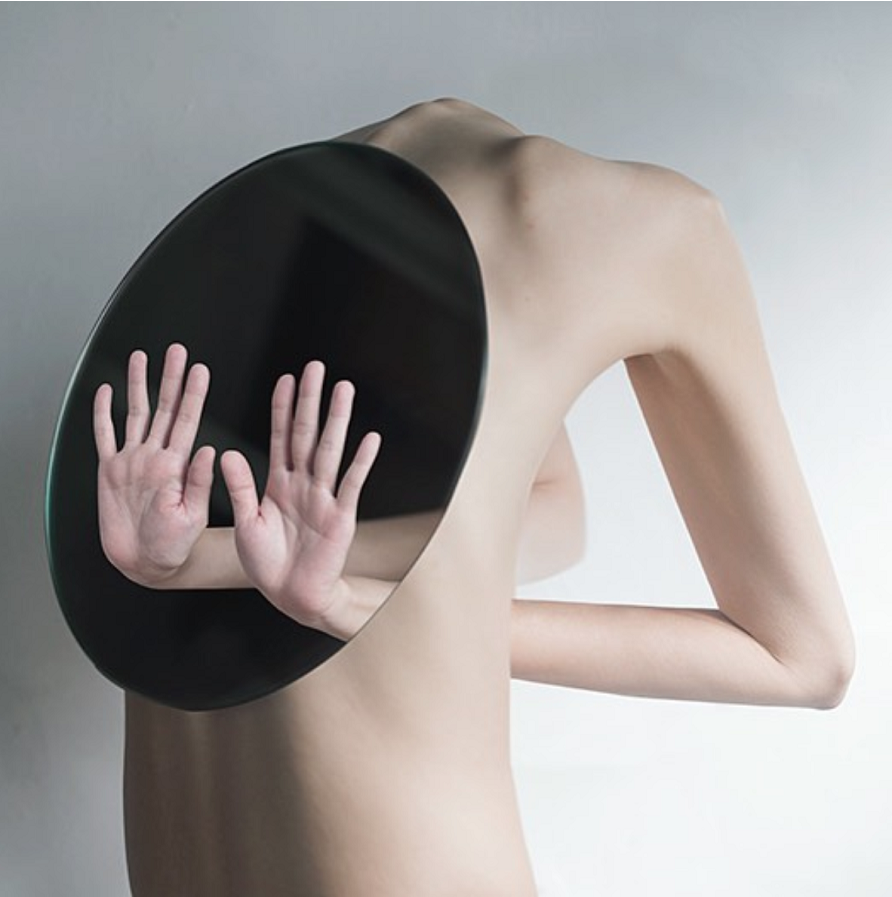
LIN YUN CHENG
ЮНГ ЧЕНГ ЛИН
يونغ تشنغ لين
The photographic experiments of the Taiwanese artist Yung Cheng Lin, aka 3cm, who confronts the human anatomy to external elements such as red thread or simple fruits, imagining surreal and geometric compositions. Some intense and disturbing conceptual photographs, which question our relation to the body and organic matter.
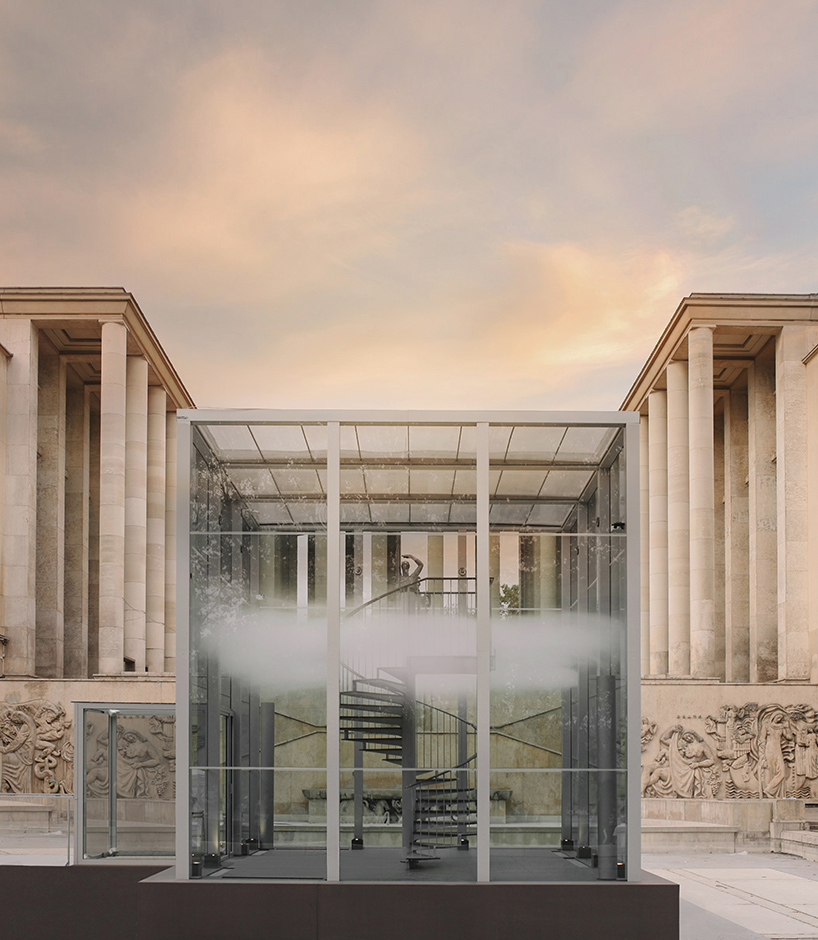
Mathilde Laurent
OSNI
‘the goal of the project is to present the fragrances of maison cartier to the public beyond any commercial or advertising context, in order to show that smell is an unrivaled vector of emotions‘, explains lead perfumer mathilde laurent. ‘[scent] is a source of wonderment, of questioning and surprise. an incredible sensation- making machine!’ OSNI symbolizes the hybridization of two distant worlds: olfaction and climate technology. a great amount of research and experiments ensured that the ‘perfuming’ of the cloud was possible, held in balance between two strata of air in an artful and elegant installation[…]

Daniera ter Haar & Christoph Brach
The work of Raw Color reflects a sophisticated treatment of material and colour by mixing the fields of graphic design and photography. This is embodied through research and experiments, building their visual language. Daniera ter Haar & Christoph Brach work on self initiated and commissioned projects in their Eindhoven based studio

ALEXANDER KENT
알렉산더 켄트
亚历山大·肯特
الكسندر كينت
Александр Кент
Alexander Kent is a London based photographer shooting modern still life. In his studio in Bethnal Green, East London he makes his sets and experiments with things. He shoots both Advertising and Editorial, though many of his personal images are a result of his experiments. Currently Kent is experimenting with the idea of boundaries. Physical boundaries, visual boundaries and scientific boundaries, looking at how they can all intermingle in one photograph.
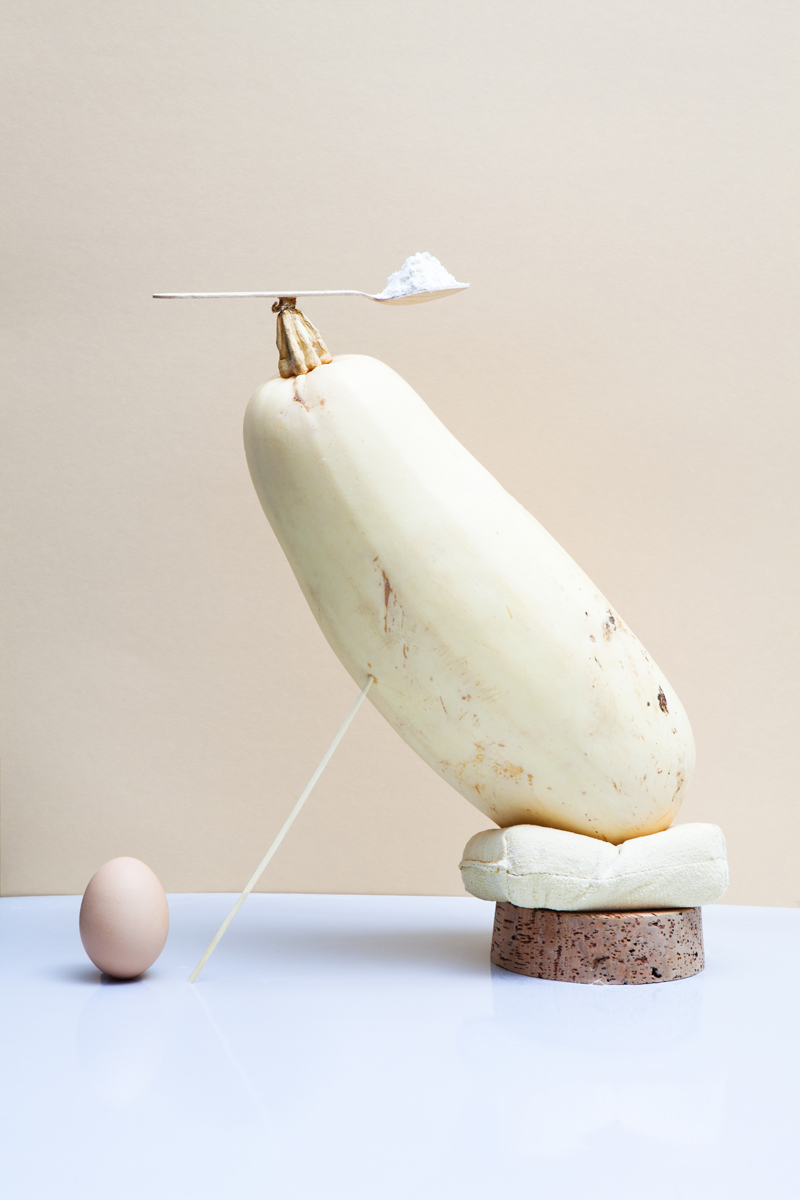
Daniera ter Haar & Christoph Brach
The work of Raw Color reflects a sophisticated treatment of material and colour by mixing the fields of graphic design and photography. This is embodied through research and experiments, building their visual language. Daniera ter Haar & Christoph Brach work on self initiated and commissioned projects in their Eindhoven based studio.

Yung Cheng Lin
Юнг Ченг Лин
يونغ تشنغ لين
The photographic experiments of the Taiwanese artist Yung Cheng Lin, aka 3cm, who confronts the human anatomy to external elements such as red thread or simple fruits, imagining surreal and geometric compositions. Some intense and disturbing conceptual photographs, which question our relation to the body and organic matter.

